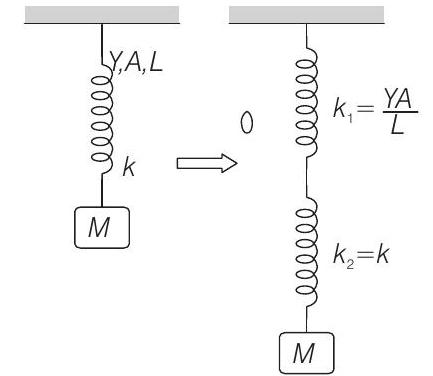Simple Harmonic Motion 3 Question 7
7. One end of a long metallic wire of length
(1993, 2M)
(a)
(b)
(c)
(d)
Show Answer
Answer:
Correct Answer: 7. (b)
Solution:

NOTE Equivalent force constant for a wire is given by






